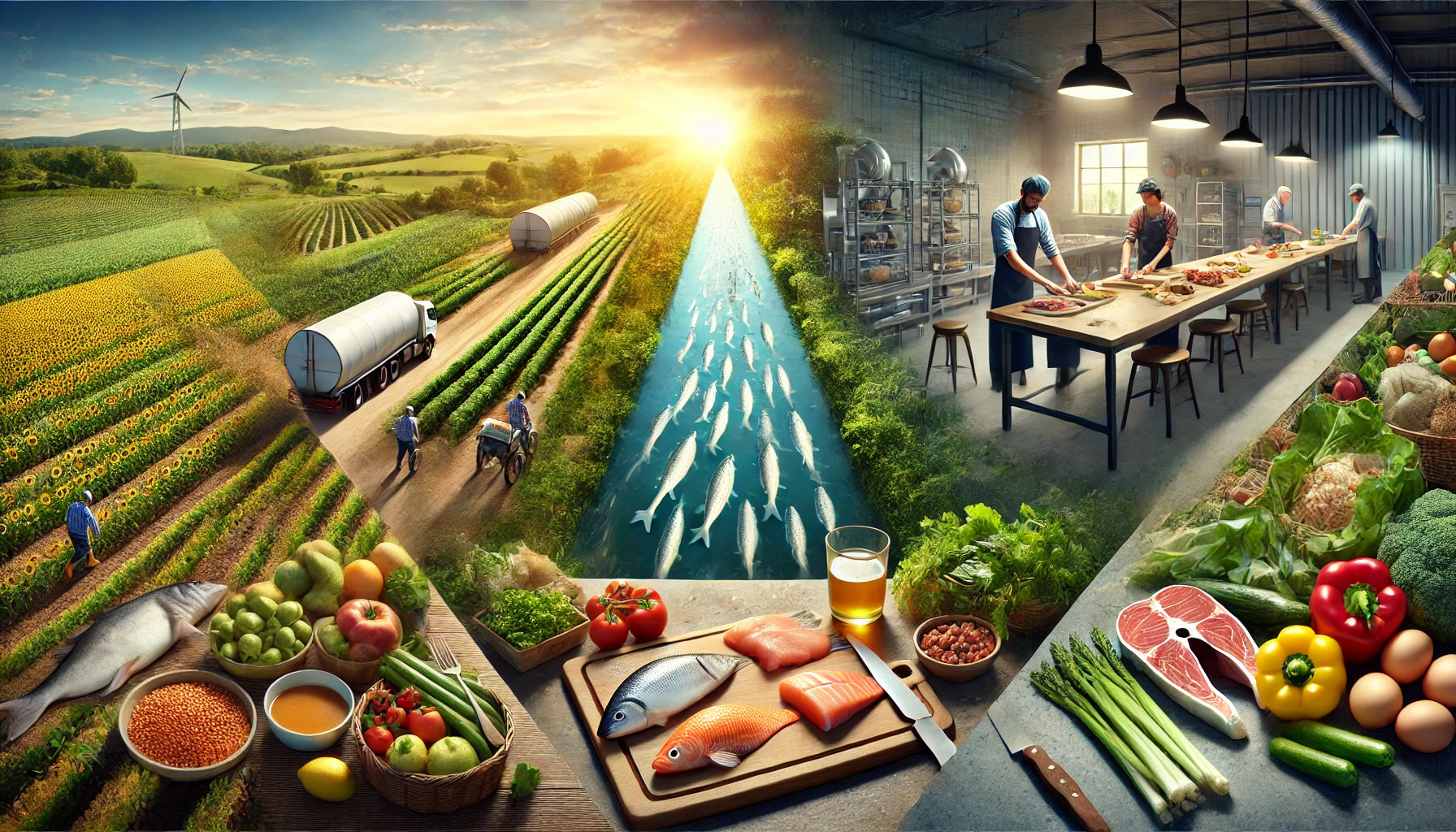From Farm to Fork: The Journey of Your Food and Its Safety
In today’s fast-paced world, food is more than just a means of sustenance; it’s a vital part of our culture, health, and environment. As consumers, we often take for granted the complex journey our food takes from the farm to our forks. However, understanding this journey is crucial for ensuring food safety, quality, and sustainability. Let’s trace the path that food products follow and highlight the importance of transparency and safety at each step.
1. The Farm: Where It All Begins
The journey of food starts at the farm, where crops are grown or animals are raised. This initial stage is fundamental to food safety, as it sets the foundation for everything that follows. Farmers must adhere to strict agricultural practices to ensure their products are safe for consumption, including proper use of pesticides, fertilizers, and veterinary care for livestock.
Transparency in Farming: Modern consumers are increasingly interested in knowing where their food comes from. Farm-to-table initiatives and certification programs (like organic or humane standards) promote transparency, allowing consumers to make informed choices about the food they buy. When you see a label indicating that your food is sustainably sourced or locally grown, it signifies that the product has met certain safety and quality standards.
2. Processing: Ensuring Quality and Safety
Once harvested, food products often undergo processing to enhance flavor, extend shelf life, or prepare them for sale. This step is where safety becomes paramount. Processing facilities must comply with food safety regulations that govern hygiene, handling, and storage.
For instance, meat processing plants are required to follow stringent guidelines to prevent contamination and ensure the health of consumers. This includes regular inspections by health authorities to enforce compliance with safety standards. Innovative solutions like BioFresh offer a new approach to preservation by using a thin, invisible layer derived from natural ingredients. This solution helps to maintain the freshness and safety of highly perishable food products during processing, significantly extending their shelf life without the need for harmful additives.
3. Distribution: The Role of Logistics
After processing, food products are packaged and distributed to retailers, restaurants, and consumers. This phase introduces additional challenges, as temperature control and proper handling are crucial for maintaining food safety. Perishable items like dairy, meat, and seafood must be kept at specific temperatures to prevent spoilage and the growth of harmful bacteria. Logistics companies play a vital role in ensuring that these products reach their destinations safely and efficiently. Consumers benefit from transparency in distribution practices. Labels that indicate how food was handled during transportation, including temperature control and delivery times, help consumers make informed choices. Solutions like BioFresh further enhance safety during this phase by protecting food from spoilage while it’s en route to consumers.
4. Retail: The Final Stop Before Your Plate
Once food products arrive at retail outlets, they are displayed for consumers to purchase. Retailers must adhere to food safety standards to protect consumers from contamination. This includes proper storage practices and regular cleaning of display areas.
Consumer Awareness: As consumers, we should also play a role in ensuring our food is safe. This means checking expiration dates, inspecting packaging for damage, and being mindful of how products are stored in stores. Understanding the signs of spoiled food can help us make better choices. BioShield’s protective qualities can help maintain the quality of food products on the shelves, ensuring that they remain fresh longer.
5. The Fork: Enjoying Your Meal Safely
Finally, after the journey through farming, processing, distribution, and retail, food arrives at our homes and is prepared for consumption. This stage is where the final safety checks occur. Proper cooking and food handling practices are essential to prevent foodborne illnesses.
Practicing Food Safety at Home: Simple practices such as washing hands before cooking, separating raw and cooked foods, and cooking meat to the recommended temperatures can significantly reduce the risk of foodborne illnesses. It’s also important to be mindful of food storage, ensuring that perishables are kept in the fridge and consumed before their expiration dates.
Incorporating BioFresh protected products can enhance your food safety efforts by ensuring the freshness and nutritional quality of your ingredients.
The journey of food from farm to fork is a complex process that relies on the cooperation of various stakeholders, from farmers to retailers. Understanding this journey and the importance of transparency and safety at each step empowers consumers to make informed choices about what they eat. As we become more aware of where our food comes from and how it is handled, we can advocate for safer practices and support brands that prioritize quality and sustainability. In the end, a commitment to transparency and safety in the food supply chain is essential for the health and well-being of our communities. Together, we can create a food system that values quality, sustainability, and health, ensuring that every meal is a step toward a healthier future.

